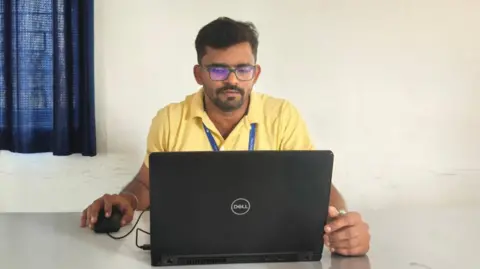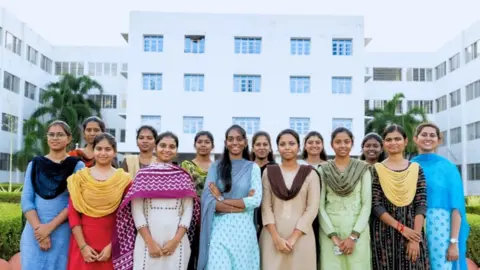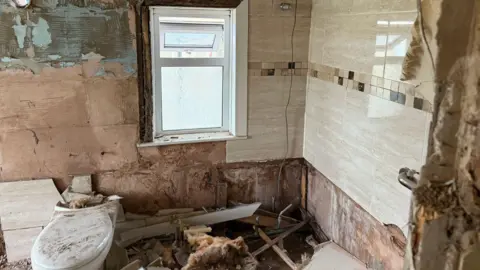Camavinga played 75 minutes in France’s draw with Iceland. The visitors headed into half-time a goal down after Palsson opened the scoring. Nkunku and Mateta struck to turn the scores around after the break, but Hlynsson found a leveller with…
Blog
-

Vivo unveils X300 series with 200MP Zeiss cameras and MediaTek Dimensity 9500 chipset · TechNode
Chinese tech firm Vivo on Monday launched its annual flagship, the Vivo X300 series, in Shanghai. Centered on the concept of a Zeiss 200MP imaging system, the lineup includes both a standard and a Pro model. Coinciding with the…
Continue Reading
-
Samsung expects highest quarterly profit in over three years, lifted by AI chip demand – Reuters
- Samsung expects highest quarterly profit in over three years, lifted by AI chip demand Reuters
- Stars align for Samsung to post its highest Q3 profit in three years SamMobile
- Samsung Electronics Announces Earnings Guidance for Third Quarter 2025 samsung.com
- Samsung Elec estimates best-ever revenue and 3-year high OP for Q3 aju press
- Samsung May Have Made a Ton of Money in Third Quarter SammyGuru
Continue Reading
-
Google Unleashes Nano Banana in NotebookLM, Lens, and Soon Photos – PCMag
- Google Unleashes Nano Banana in NotebookLM, Lens, and Soon Photos PCMag
- Nano Banana is coming to Google Search, NotebookLM and Photos. The Keyword
- Nano Banana’s viral features are coming to more Google apps Android Police
- Gemini 2.5 Flash:…
Continue Reading
-

Why AI is being trained in rural India
Priti GuptaTechnology Reporter, Mumbai
 NextWealth
NextWealthIndia’s Virudhunagar is home to ancient temples Virudhunagar, a town in southeastern India, can boast temples that date back thousands of years.
But not far from those ancient sites, people are working on the latest tech – artificial intelligence.
One of those is Mohan Kumar.
“My role is in AI annotation. I collect data from various sources, label it, and train AI models so they can recognize and predict objects. Over time, the models become semi-supervised and can make decisions on their own,” he says.
India has long been a centre for outsourced IT support, with cities like Bangalore or Chennai being traditional hubs for such work.
But in recent years firms have been moving that work into much more remote areas, where costs for staff and space are lower.
The trend is know as cloud farming, and AI has given it another boost with numerous towns, like Virudhunagar, hosting firms working on AI.
So does Mr Kumar think he is missing out, by not being in a big city?
“Professionally, there is no real difference. Whether in small towns or metros, we work with the same global clients from the US and Europe, and the training and skills required are the same,” says Mr Kumar.
 Mohan Kumar
Mohan KumarMohan Kumar prepares data used to train AI models Mr Kumar works for Desicrew. Founded in 2005 it was a pioneer in cloud farming.
“We realised that instead of forcing people to migrate to cities in search of jobs, we could bring jobs to where people already live,” says Mannivannan J K, the chief executive of Desicrew .
“For too long, opportunities have been concentrated in cities, leaving rural youth behind. Our mission has always been to create world-class careers closer to home, while proving that quality work can be delivered from anywhere.”
Desicrew does all sorts of outsourced work including software testing for start-up firms, building datasets to train AI, and moderating content.
At the moment 30 to 40% of its work is AI related, “but very soon, it will grow to 75 to 100%,” says Mr J K.
Much of that work is transcription – turning audio to text.
“Machines understand text far better,” he explains.
“For AI to work naturally, machines must be trained to understand variations in how people speak. That’s why transcription is such a crucial step, it forms the foundation for machines to comprehend and respond across languages, dialects, and contexts.”
Doing such work in a smaller town is not a disadvantage, Mr J K says.
“People often assume rural means underdeveloped, but our centres mirror urban IT hubs in every way – secure data access, reliable connectivity, and uninterrupted power. The only difference is geography. “
Around 70% of his workforce are women: “For many, this is their first salaried job, and the impact on their families is transformative – from financial security to education for their children,” says Mr J K.
 NextWealth
NextWealthAround 60% of NextWealth staff are women Founded in 2008, NextWealth was also an early mover in cloud farming.
Headquartered in Bangalore, it employs 5,000 staff in 11 offices in smaller towns across India.
“Sixty percent of India’s graduates come from small towns, but most IT companies hire only from the metros. That leaves behind a huge untapped pool of smart, first-generation graduates,” says Mythily Ramesh, co-founder and managing director of NextWealth.
“Many of these students are first-generation graduates. Their parents are farmers, weavers, tailors, policemen – families who take loans to fund their education,” she says.
NextWealth started with outsourced work from the back offices of big companies, but five years ago moved into artificial intelligence.
“The world’s most advanced algorithms are being trained and validated in India’s small towns,” says Ms Ramesh.
Around 70% of its work comes from the US.
“Every AI model, from a ChatGPT-like system to facial recognition, needs vast amounts of human-labelled data. That is the backbone of cloud-farming jobs.”
She thinks there is plenty more work to come.
“In the next 3–5 years, AI and GenAI will create close to 100 million jobs in training, validation, and real-time handling. India’s small towns can be the backbone of this workforce.”
She is hopeful that India can remain a hub for such work.
“Countries like the Philippines may catch up, but India’s scale and early start in AI sourcing gives us a five to seven-year advantage. We must leverage it before the gap narrows,” she says.
KS Viswanathan is a technology advisor, and formerly worked at India’s National Association of Software and Service Companies, the trade association for outsourcing firms.
“Silicon Valley may be building the AI engines, but the day-to-day work that keeps those engines reliable increasingly comes from India’s cloud farming industry,” he says.
“We are truly at a tipping point. If cloud farming continues to scale, small-town India could well become the world’s largest hub for AI operations, just as it became the hub for IT services two decades ago.”
But success is not guaranteed.
While Next Wealth and Desicrew both say they have access to reliable and secure internet connections, Mr Viswanathan says that is not always the case in India’s smaller towns.
“Reliable high-speed internet and secure data centres are not always at par with metros, which makes data protection a constant concern.”
Even if good connections are in place, work needs to be done to reassure clients.
“The bigger challenge is the perception rather than a technical one. International clients often assume small towns cannot meet data security standards, even when the systems are robust. Trust has to be earned through delivery.”
Back at NextWealth, Dhanalakshmi Vijay “fine-tunes” AI. For example, if it confuses two similar looking items, like a blue denim jacket and a navy shirt, she will correct the model.
“These corrections are then fed back into the system, fine-tuning the model so that the next time it sees a similar case, it performs better. Over time, the AI model builds up experience, just like updating software with regular patches to make it more accurate and reliable,” says Ms Vijay.
Such work has an effect in the real world.
“It’s me and team who indirectly train the AI models to make your online shopping experience easy and hassle free,” she says.
More Technology of BusinessContinue Reading
-

NASA Jet Propulsion Laboratory lays off 550 workers
NASA’s Jet Propulsion Laboratory announced Monday that it will cut around 550 jobs — around 10% of its staff.
In a statement posted online, the lab’s director, Dave Gallagher, said the layoffs are part of a broad “realignment of its workforce” and not a result of the government shutdown.
The cuts will affect positions across the NASA center’s technical, business and support areas, he said.
“This week’s action, while not easy, is essential to securing JPL’s future by creating a leaner infrastructure, focusing on our core technical capabilities, maintaining fiscal discipline, and positioning us to compete in the evolving space ecosystem — all while continuing to deliver on our vital work for NASA and the nation,” he said.
Gallagher added that employees will be notified about their statuses Tuesday.
The Jet Propulsion Laboratory, in Pasadena, California, is a research and development center that is federally funded by NASA but managed by the California Institute of Technology. It is where some of the space agency’s most iconic missions were built, including the United States’ first satellite, Explorer 1, which launched into space in 1958.
JPL scientists also designed, built and operated all five rovers that NASA has successfully landed on the surface of Mars.
NASA faces uncertainty over its budget and future priorities. Like most other government agencies, it has sustained major cuts to funding and personnel during the Trump administration — part of the push to shrink the federal workforce.
Around 4,000 NASA employees have accepted deferred resignation program offers since President Donald Trump took office, which reduced the space agency’s staff of 18,000 by nearly one-fifth.
In July, Reuters reported that around 2,145 senior-level employees at NASA were set to leave in the latest round of cuts.
Last week, as the government shutdown persisted, the Trump administration began laying off more than 4,000 federal workers across several other departments, including the Treasury Department and the Department of Health and Human Services. The cuts did not appear to affect NASA.
Continue Reading
-

Thousands of homes with botched eco insulation ‘must be fixed’
Zoe ConwayCorrespondent, BBC News and
Pritti MistryBusiness reporter
 BBC
BBCMohammed Muhedi noticed problems almost immediately following insulation work in his home in 2023 A government scheme aimed at cutting energy use by insulating homes was botched on a vast scale, a spending watchdog has found, leaving tens of thousands of homes in need of remedial work.
According to the National Audit Office (NAO) 98% of homes that had external wall insulation installed under the scheme have problems that will lead to damp and mould if left unaddressed.
Nearly a third, or 29%, of the homes that were given internal insulation also need fixing, it said.
Energy Consumer Minister Martin McCluskey said the government was taking action and that the homes would be fixed “at no cost to the consumer”.
Mohammed Mahedi, who had external wall insulation fitted to his Luton home two years ago, is living with the consequences.
”Some mornings I wake up breathing really, really heavily. I feel it in my neck. I feel it in my lungs,” he says.
The BBC first reported the impact of faulty insulation in Luton last year.
Mohammed is still fighting to get the problem fixed.
“We got a scheme done that was meant to be helping us but it’s made everything worse.”
 Lukman Ashraf
Lukman AshrafBotched insulation work has left other homes in Luton uninhabitable due to dry rot fungus In 2022 the previous government directed energy companies to spend billions of pounds, raised via levies on energy bills, on insulating homes across the UK, targetting people receiving benefits and those in very poorly insulated homes.
However, the NAO found there were “clear failures” in the design of the Energy Company Obligation (ECO) scheme, which resulted in “poor-quality installations as well as suspected fraud”.
Gareth Davies, head of the NAO, said it was now up to the Department for Energy Security and Net Zero (DESNZ) to ensure the businesses responsible repaired “all affected homes as quickly as possible”.
“It must also reform the system so that this cannot happen again,” he said.
The NAO, which monitors how public money is spent, cited an “under-skilled workforce”, businesses cutting corners and uncertainty over which standards to apply to which jobs, as some of the reasons for the substandard work.
It found that between 22,000 and 23,000 homes that had received external wall insulation, and up to 13,000 properties with internal wall insulation were now in need of repairs.
A small percentage of installations – 6% for external and 2% of internal insulation – posed an “immediate health and safety risk” from faults such as exposed live electrical cabling or blocked boiler ventilation, it said.
The NAO report focused on two specific schemes, ECO4 and the Great British Insulation Scheme.
But it also directed criticism at TrustMark, a consumer protection scheme set up in 2021 to monitor the quality of insulation programmes. It said there had been “weak” oversight and insufficient auditing of the schemes.
The NAO said that had allowed installers to “game” the system. Last year the whole-industry regulator, Ofgem, estimated that businesses had falsified claims for ECO installations in up to 16,500 homes, potentially claiming between £56m and £165m from energy suppliers.
TrustMark said it accepted that more needed to be done and said it remained “completely committed to ensuring strong consumer protection and confidence”.
It said the organisation took “firm, fair and decisive action” when it first noticed issues with the work in 2024 and “kept industry groups and government fully informed at every stage”.
Energy minister, McCluskey said the NAO report revealed “unacceptable, systemic failings” left by the previous government.
He said there would be “comprehensive reforms” and “clear lines of accountability” in future.
Continue Reading
-

Dementia risk for people who quit smoking in middle age ‘same as someone who never smoked’ | Dementia
People who stop smoking in middle age can reduce their cognitive decline so dramatically that within 10 years their chances of developing dementia are the same as someone who has never smoked, research has found.
Kicking the habit halves the rate…
Continue Reading
-

Apple Services Revenue Hits $27.4B, Up 108% in 5 Years
Apple’s Services revenue keeps surging, setting fresh records quarter after quarter. The numbers tell a story investors should not ignore. In the third quarter, services generated $27.4 billion in sales, marking a 13% year-over-year increase….
Continue Reading
-

ASC Celebrates ’25 Student Heritage Award Winners, Nominees
Since 1999, the ASC Student Heritage Awards have honored the work of up-and-coming cinematographers at the university level. The awards are a pillar of the Society’s ongoing commitment to recognizing and nurturing the next generation of…
Continue Reading

